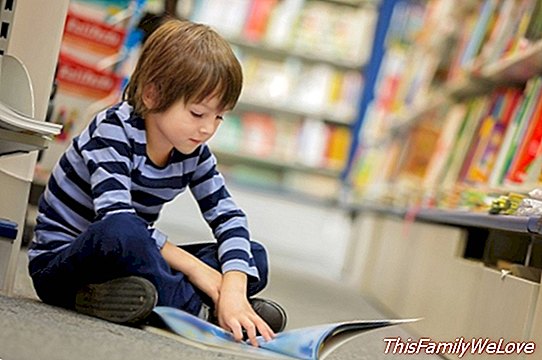Spanish students improve reading comprehension but they continue to suspend it

Letters and words are present in our lives in many ways. From a small note to tell us about a message to a book full of fascinating stories. In any case, the most important thing to know what these people want to tell us symbols is to know how to recognize them, not only that, but to understand well what the author has previously written.
Therefore, the reading comprehension It becomes a very important skill for the little ones in the house. What is the level among students in Spain? About it speaks the PIRLS report (Progress in International Reading Literacy Study) developed by the International Association for the Evaluation of Educational Performance, IEA for its acronym in English. According to the data of this work in this country it has been improved, but it still has to be done.
Increase in level
The good news of the PIRLS report is that Spain has experienced a large increase in the levels of reading compression in the five-year span from 2011 to 2016. A growth that has only been surpassed by Australia and that shows the results that have been obtained in education during all these years. The bad news is that the average number of students is still below that approved in the OECD.
Spain has achieved 528 points in PIRLS. Within it the average of the 50 participating countries is 500 points, so in this case the approved is achieved. However, the comparison with the numbers in the PISA report, the reality is different since students stay at 12 points approved and 11 if you take as a reference the surveys conducted by the European Union.
In comparison with other countries, Spain surpasses France that obtains 511 points and Belgium, with 497. At the top of the ranking is Russia with 581, followed by Singapore with 576 and Hong Kong with 569. The best evaluation of this evolution the day Dirk Hastedt, executive director of the IEA, who points out that we must focus more on the evolution of results than on them.
Improve reading comprehension
Spain has improved as far as comprehensive reading is concerned, but much remains to be done. In this sense, from home you can also work supporting the child to it. These are some proposals from Ángel Sanz Moreno, member of the UNED:
- Become aware. The first thing to know if a text has been understood is to ask the children, check the level at which they start to see how much improvement is needed and if the child, even a little, understands what they have read.
- Understand the objective. A very good help to improve reading comprehension is that the child knows what type of text is faced: is it a story, is it an opinion, is it information provided in data? Preparing the mind for the reading category will help greatly.
- Organize the information. Categorizing the information that is read is very helpful, for example, when confronting a story, organizing the content chronologically is a great help.
- Synthesize information. Is all the information important? Helping the child to find the key points will be a great help when faced with a text.
Damián Montero




